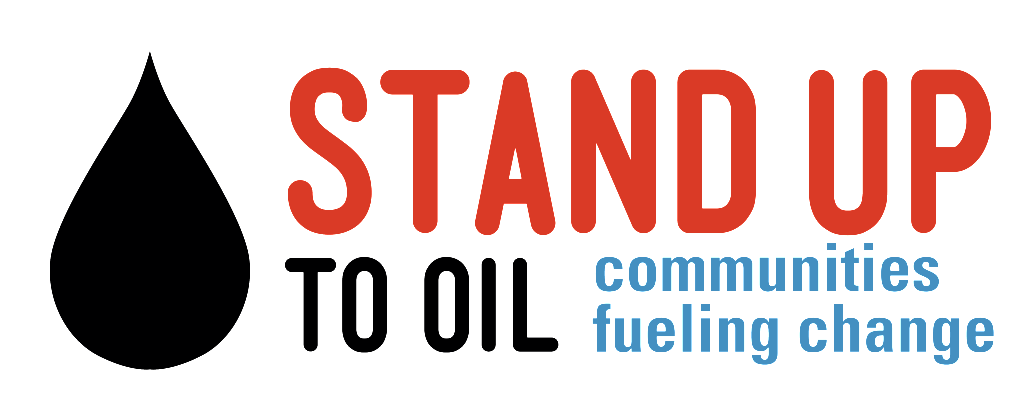Read more about the Tesoro-Savage oil terminal here. >>
On November 21, 2017, the Energy Facility Site Evaluation Council (“EFSEC”) released the Final Environmental Impact Statement (“FEIS”) for the proposed Tesoro-Savage Oil Terminal in Vancouver, Washington. EFSEC is the state agency charged with making a final recommendation to Governor Inslee about whether to approve, approve with conditions, or deny the Tesoro-Savage application. To make its decision, EFSEC must consider information in the FEIS, information gathered through its processing of draft air and water permits, and information received through the five-week adjudicative trial that occurred in July 2016 in Vancouver and Olympia.
The FEIS is available at http://www.efsec.wa.gov/Tesoro%20Savage/FEIS/FEIS_PAGE.shtml.
The FEIS explains that Tesoro-Savage’s proposal would cause significant harmful impacts that cannot be mitigated. It also identifies other areas of significant impact where the proposed mitigation measures either fall short or aren’t mitigation measures at all. Under state law, EFSEC can and should recommend denial of the Tesoro-Savage application.
The FEIS finds at least five aspects of the Tesoro-Savage proposal would cause significant harm and risks to the environment and public health and are unavoidable. The FEIS-identified significant, unavoidable impacts and risks include:
- Seismic: ground-shaking and liquefaction (p. ES-12)
- Rail/pedestrian accidents (p. ES-15 to ES-16)
- Rail traffic delay at at-grade crossings: increase emergency response times (p. ES-18)
- Disproportional impacts to minority and low-income populations due to: decrease in property values, gate downtime impacting motorists and emergency responders, and increased noise (p. ES-19)
- Major non-mitigatable impacts to public safety, aquatic resources, transportation, and wildlife in the case of an oil spill, fire, or explosion (p. ES-40)
The FEIS also identifies the risk of an oil spill, fire, or explosion as significant and non-mitigable but fails to list this risk in the executive summary. “A crude oil spill, fire, and/or explosion could result in significant adverse impacts, depending on the size, location, and extent (e.g., duration or intensity) of the incident. The range of potential impacts to the built and natural environment resulting from such incidents are described in Section 4.7, 4.8, and 4.9. Although the likelihood of occurrence of the potential events described in this chapter may be low, the consequences of the events could be severe. Pursuant to SEPA WAC 197-11-794 (2), unlikely but severe impacts are considered significant. … However, the potential for unanticipated events resulting from factors occurring alone or in combination, as described in Section 4.3.1, cannot be totally eliminated.” (p. 4-243) (emphasis added)
The FEIS identifies several additional areas of significant harm caused by the Tesoro-Savage proposal where it incorrectly concludes that mitigation ameliorates that harm or simply fails to provide mitigation.
- Wake stranding of juvenile fish (p. ES-24 to ES-26); the proposed measures of further study, monitoring, and development of future unknown actions (p. ES-25) cannot mitigate impacts.
- Air quality – diesel particulate emissions (p. ES-30); the FEIS finds that Tesoro-Savage will cause an increased rate of 6.9 additional cancers per million for residential populations and 5.7 additional cancers per million for commercial populations. No mitigation is proposed because these increases fall below a ten additional cancers per million threshold (p. ES-30).
- Greenhouse gas emissions (p. ES-31); the FEIS finds that Tesoro-Savage will emit 4,041 metric tons of CO2e per year during construction and decommissioning. During operation, the FEIS estimates Tesoro-Savage will emit 313,295 metric tons of CO2e per year. These Scope 1, 2, & 3 impacts do not include burning/refining the oil (Table 3.2-15, p. 3-83). When refining/burning of the crude oil is included in the lifecycle analysis, Tesoro-Savage is responsible for 54 million metric tons of CO2e emissions per year, “about 0.9 percent of the US total GHG emissions.” (p. 5-57) (emphasis added).Proposed mitigation, however, is limited to “eliminate, mitigate, or offset” 100% of the stationary and mobile sources on-site and within 1 nautical mile annually, approximately 95,534 metric tons CO2e/year (p. 3-85), and “eliminate, mitigate, or otherwise offset” 50% of the GHG emissions from purchased electricity used by facility, approximately 16,194 metric tons CO2e/year (p. 3-86). This partial mitigation (barely 0.2% of greenhouse gas emissions caused by the project) is wholly inadequate.
- Oil spill risk, rail (p. ES-33); the FEIS identifies a 72% increase in risk of rail oil spill. “EFSEC has not identified mitigation measures to prevent an accidental crude oil spill, fire, or explosion that could be implemented or required by other parties.” (p. ES-39). The FEIS describes the same failure to identify response preparedness mitigation measures (p. ES-40). Mitigation includes only coordination and training.
- Oil tanker collisions (p.3-321); the FEIS estimates 1 oil tanker collision every 7.2 years, but provides no mitigation.
- Tribal Treaty Rights and Resources. Minimally addressed, no mitigation, even though adverse impacts identified. “Cumulative impacts to tribal treaty areas from trains associated with the Proposed Action and existing and foreseeable future actions are anticipated.” (p. 5-53, Section 5.18.2).
